13 Mar 2023 - {{hitsCtrl.values.hits}}
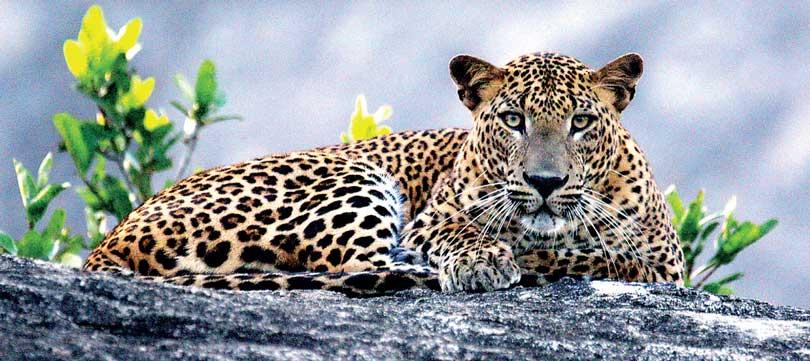
Yala is home to a significant population of Leopards (Pic by LSM)
There is, renewed hope of the Plan’s revival and who better than Dr Pilapitiya, who was the Chair of the formulating Committee, to explain its contents
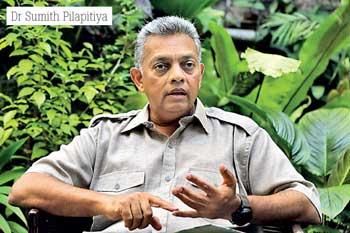 For many years now, Dr Sumith Pilapitiya has publicly proclaimed the fact that Sri Lanka has the potential to be the 2nd most desirable World destination for wildlife enthusiasts, outside of Africa. “Where else could you see the world’s largest marine mammal, the Blue Whale, in the morning, and the world’s largest terrestrial mammal, the elephant, in the afternoon, and all on the same day?”
For many years now, Dr Sumith Pilapitiya has publicly proclaimed the fact that Sri Lanka has the potential to be the 2nd most desirable World destination for wildlife enthusiasts, outside of Africa. “Where else could you see the world’s largest marine mammal, the Blue Whale, in the morning, and the world’s largest terrestrial mammal, the elephant, in the afternoon, and all on the same day?”
It is not just this island’s high biodiversity – 97 species of terrestrial mammals, 29 species mammals, 492 species of birds, 245 species of butterflies, 130 known species of dragonfly, 95 species of freshwater fish, et al – that attracts wonder, but also the beautiful, pristine places which host them – 70 species of known trees, 3,210 flowering plants, over 100 waterfalls, 103 natural river basins, 501 protected areas, and all surrounded by a teeming tropical ocean with mangrove borders, sea grasses and coral reefs; what a blessed isle!
This belief has now been espoused by the prestigious Forbes magazine as a ‘Top Wildlife Safaris Outside of Africa’ for 2023.
Continuing destruction
Yet, despite 75 years of independence, Sri Lanka’s policymakers continue to be trapped in a colonial mindset that natural resources are there to be plundered and exploited until they have been exhausted. The principles of sustainable development and preservation for the long-term benefit of many, for today and the future, are just statements to be meted out to the global community in an attempts to find funding for this financially impoverished Nation, while actively destroying a natural heritage of immeasurable wealth that could bring in large amounts of foreign income, if properly protected, managed and sustained.
For it must not be forgotten that even in Sri Lanka today, with its imperfect systems, wildlife tourism sustains local economies that amount, in some areas, to trillions of rupees a year, and provides income to thousands – hotels, guest houses, restaurants, shops, tourism guides, safari jeep drivers, and to the relevant statutory agencies; the Department of Wildlife Conservation (DWC) and Forest Departments. With this steady income comes the opportunity for these beneficiaries to raise the living standards of their families, and of the local community as a whole. That is what can be achieved if wildlife tourism is managed properly.
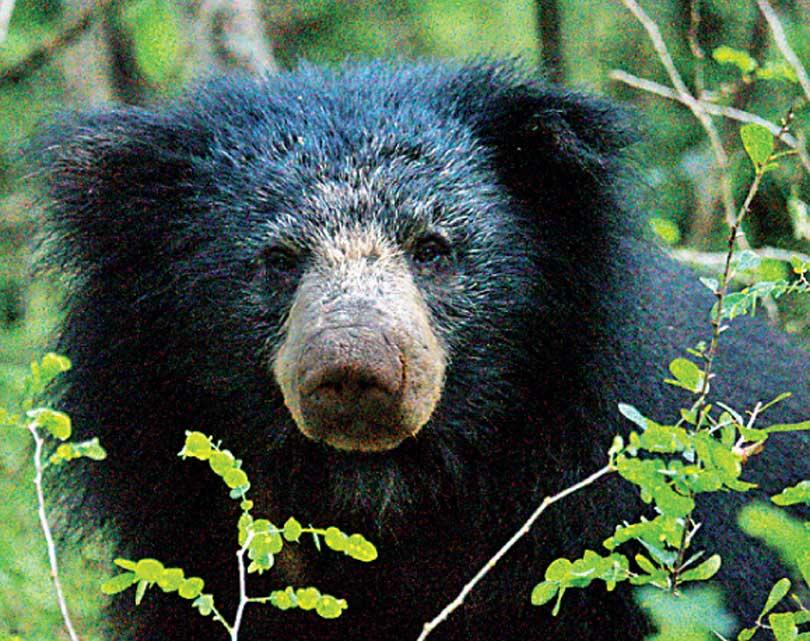
Beauty of Yala (Pic by LSM)
The sad reality
Sadly, however, both the tourism and wildlife protection agencies continue to be committed to the false belief that quantity is all that matters, and that quality is of little consequence. This demonstrates a complete lack of understanding of the way tourism is evolving today, especially wildlife tourism, where the experience counts more than the number of iconic species counted. What visitors look for is a Total Wildlife Experience where they learn from, spend time with, and become immersed in an environment and its inhabitants, without intruding on them in any way, but just enjoying their being in the safety of their wilderness home.
For years Dr Pilapitiya has been trying to drive this message home with those who matter. He has led Nature Interpretation Programmes for stakeholders at many of the National Parks, and was instrumental in the formulation of the‘Action Plan for Improving the Overall Wildlife Tourism Experience in Yala National Park (Block 1)’, with inputs from all of its primary stakeholders. For many years now, Yala has been used, and abused, by those adhering to those archaic strategies revolving around the misguided view that the greater the number, the greater the reward. Hundreds of vehicles are permitted entry into the Park and jeeps jostle with, and speed, against each other to a sighting of an iconic creature, passing much other beauty along the way. The rules of the Park are regularly flouted and the needs of the wildlife are marginalized; some animals even losing their lives in the melee! As such, Yala needed, and continues to require, such an Action Plan. Sadly, these set of strategies first requested by the then Prime Minister, now President, have languished on the shelves of a Ministry for all of this time, and the mayhem continues.
There is, however, renewed hope of the Plan’s revival and who better than Dr Pilapitiya, who was the Chair of the formulating Committee, to explain its contents in detail? As a former Director General of the DWC, he is well aware of the wildlife of Yala’s desperate need for the implementation of this Plan; a possible template for the other National Parks too.
As the founder of the Wilpattu and Yala National Parks, it is fitting that the Wildlife & Nature Protection Society (WNPS) would wish to save its creation, and support such a plan.
The public lecture is open to both members and non-members, ENTRANCE FREE.
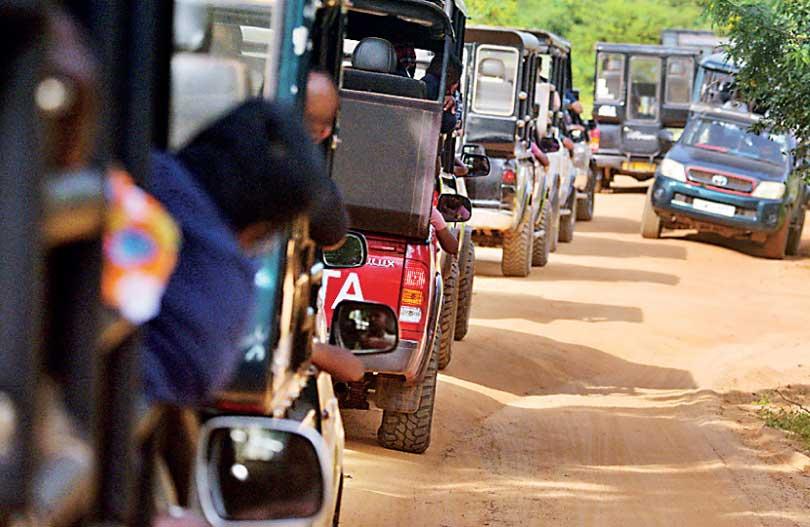
Traffic jams inside the Yala National park (Pic by LSM)
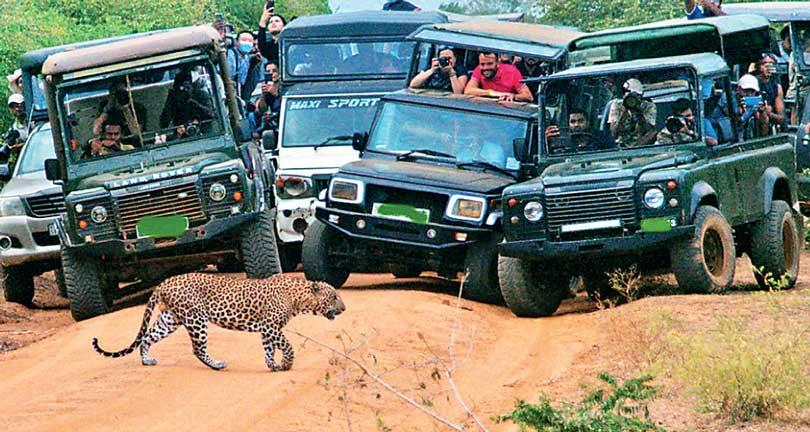
Leopards are one of the major attractions for visitors to the park
02 Jan 2025 51 minute ago
01 Jan 2025 9 hours ago
01 Jan 2025 01 Jan 2025
01 Jan 2025 01 Jan 2025
01 Jan 2025 01 Jan 2025